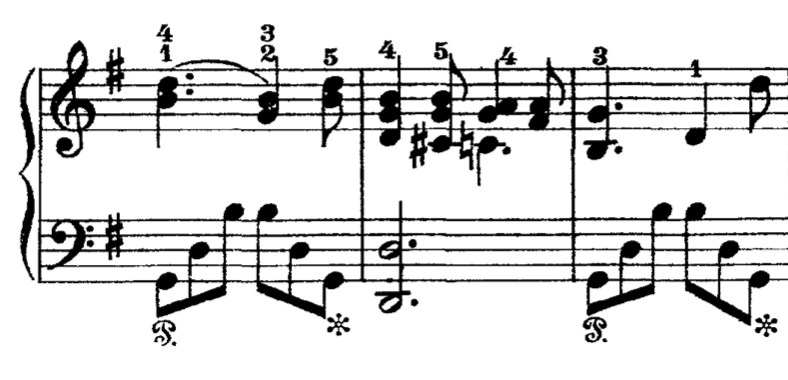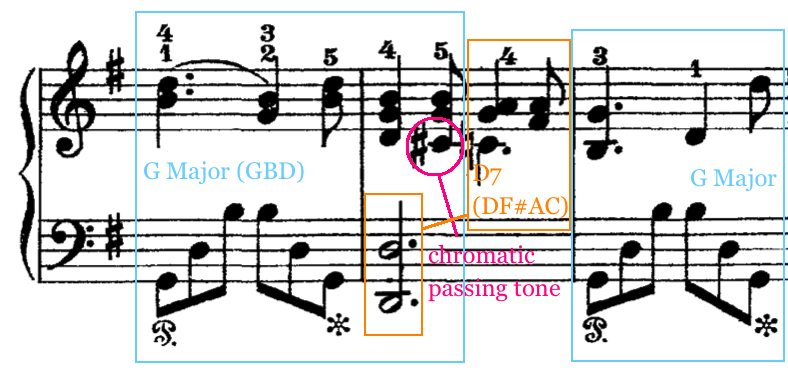Glance at these letters for a moment.
IXW ZDA RSN TRV NCL
How much can you immediately recall? Ugh, my brain hurts just thinking about it.
Now try the same thing with this set of letters:
JFK USA FBI CIA NYC
This time, you can probably recite the whole sequence painlessly after just a glance. Why? Instead of being just random letters, there is a meaning you can assign to each set of three. Instead of fifteen ugly letters, you have five familiar concepts.
Below is an excerpt from Grieg's Op. 17, No. 22 for piano, "So lokka me over den myra." If my Norweigan serves me, it's a folk song about a Scandinavian cowboy. If you do not read music well, it will look a little scary.

I counted thirty-five notes. Yikes! For years, I had to decode each one of those notes individually to be able to play a piece like this.
Luckily, in the summer after my sophomore year of High School I had the opportunity to attend the annual Summer Youth Music School at the University of New Hampshire. There, in a stuffy dorm lounge on an afternoon in late July, Lisa Lemay taught me all about chords. Several classmates slumped over half asleep but I was rapt, taking detailed notes and hanging on every word. This was the secret to reading music! Finally.
After that, the Grieg looked like this to me:

In other words, it wasn't thirty-five notes anymore. It was two or three musical ideas that had meaning to me, just like JFK or USA.
In the blue boxes above, everything except the circled note is either G, B, or D. That is somewhat helpful in itself, but together, those three notes are the G major chord, which is like a musical word. D7 is another chord, composed of four different notes. The smaller orange box contains two D's which are shared by both the G chord and the D7 chord.
Even better, there is a relationship between G and D7 - each of these "words" has a meaning in the larger context of the musical piece. Since we're in the key of G, I would expect to see both of those chords, which means that the whole excerpt can be thought of as one idea (a common I - V7 - I pattern).
I suppose if you're a conspiracy theorist you'll see one idea in JFK USA FBI CIA (maybe DFW instead of NYC).
Whether you read music or not, I hope I've illustrated that all this music theory is not so much "theory" as distinctly practical knowledge that immediately helps you to play music.
Musicians are not decoding the printed score when they read music - they are reading fluently, digesting ideas and concepts the way they read words. Music theory is the grammar that makes this possible and the not-so-secret key for unlocking the door to significant musical growth.



